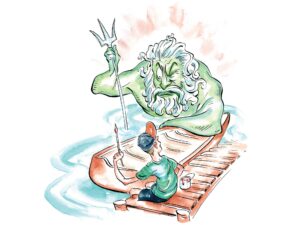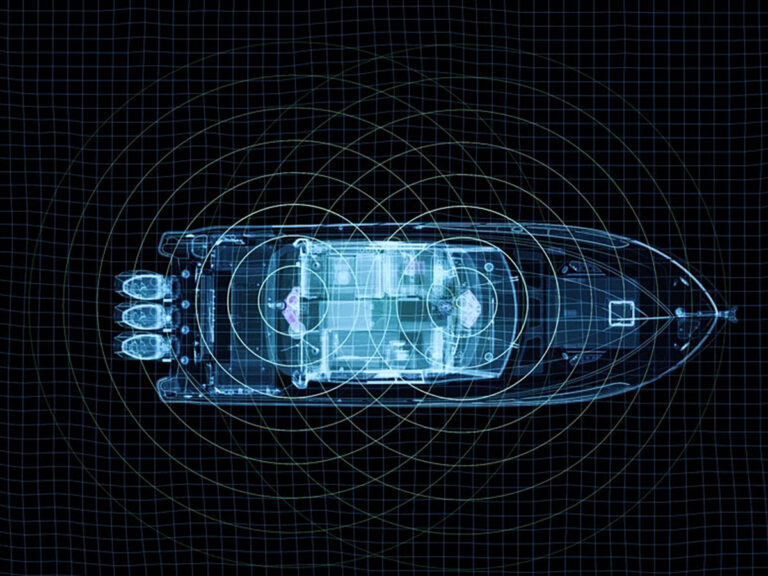
This VHF radio exchange between a boat skipper and the marine-towing-service dispatcher still sticks in my mind.
“Hurry!” the boater pleaded. “My motor died, and we’re drifting toward the rocks!”
“Do you have an anchor?” the dispatcher calmly asked.
“Yes,” the breathless boater replied.
“Please put your anchor down to keep from drifting any farther, and one of our boats will be there as soon as possible,” the dispatcher responded.
“Oh, OK!” the boater said with a hint of relief in his voice. “I didn’t even think of that. Thanks.”
Crew Safety
In emergency boating situations, obvious solutions can sometimes become obfuscated amid panic and chaos. That’s why it’s important to think through potential emergencies such as loss of power well ahead of time and plan a course of action in the event this occurs. You might even run practice drills. Preparedness and forethought promote a rational, calm and quick response to emergencies.
In the lack of preparedness, the first instinct is often an attempt to fix the issue or immediately call for help. But prudent seamanship dictates that first and foremost, you should focus on making sure your crew remains safe. And that usually depends on keeping the boat out of harm’s way.
How you secure the boat might well depend on the situation, sea conditions, and other factors such as anchoring options and the availability of alternate onboard propulsion systems. Here are five ways keep your crew safe while you explore a fix or call for a tow when the main propulsion system fails.
Anchor Down
Given the appropriate depth, drop the anchor as soon as you lose power, even if there’s plenty of distance between your position and potential hazards. Current and wind can push the boat along at a surprising clip, closing the distance with alarming speed, especially if you have your head down trying to resuscitate the motor and not paying attention to approaching threats.
This, of course, hinges on having ground tackle that’s in good condition, sized properly, and ready to deploy at a moment’s notice. Regularly inspect your anchor and rode. Also avoid stowing ground tackle deep inside a locker where it’s difficult to extract quickly in an emergency situation.
Pole-style shallow-water anchors represent yet another way to keep a boat in position. Found on many bay boats, flats skiffs and bass boats, these devices rely on articulating arms and fiberglass spikes stabbed into the lake or sea bed. As the name implies, a shallow-water anchor works only in depths to about 7 to 10 feet, and it loses effectiveness when big waves prevail.
Sea Anchor
If you lose power out at sea, the water might prove too deep for ground tackle, negating the possibility of anchoring up. At the same time, drifting in heavy seas can threaten safety. For example, if the boat tends to drift with the stern to the waves, seas might broach the transom and swamp the boat.
In this situation, it is a good idea to deploy a sea anchor from a bow cleat. Working like an underwater parachute, a sea anchor deployed in this manner tends to keep the bow riding into the waves, resulting in a drift that’s less likely to swamp the boat. If the boat tends to drift beam to the seas, a sea anchor deployed from the bow can eliminate the uncomfortable, violent and potentially dangerous roll.
Make sure your sea anchor and its line are sufficiently sized for your boat. Also ensure that there’s plenty of line to keep the sea anchor submerged as the bow pitches in heavy seas.
Read Next: How To Install an Auxiliary Outboard Engine
Auxiliary Power
Another option to keep in mind is auxiliary power in the event that main power conks out. This often comes in the form of a smaller “kicker” motor, such as a 9.9 to 25 hp outboard on a transom bracket. A kicker can push you away from danger and back home, albeit at a slow pace.
Yet, lowering the kicker, priming the engine, and getting it started can still take time. Also there’s no guarantee that a seldom-used auxiliary outboard will immediately start, especially if the issue affecting the big motor(s) is lack of fuel. So it’s still a good idea to first deploy an anchor before you begin fussing about with a kicker.
Kickers aren’t the only form of backup power. Many boats today have bow-mounted trolling motors powered by a separate battery bank from the main engine(s). Depending on current, wind and sea conditions, these can hold a boat in position in spot-lock mode or, just as importantly, propel you away from danger.









